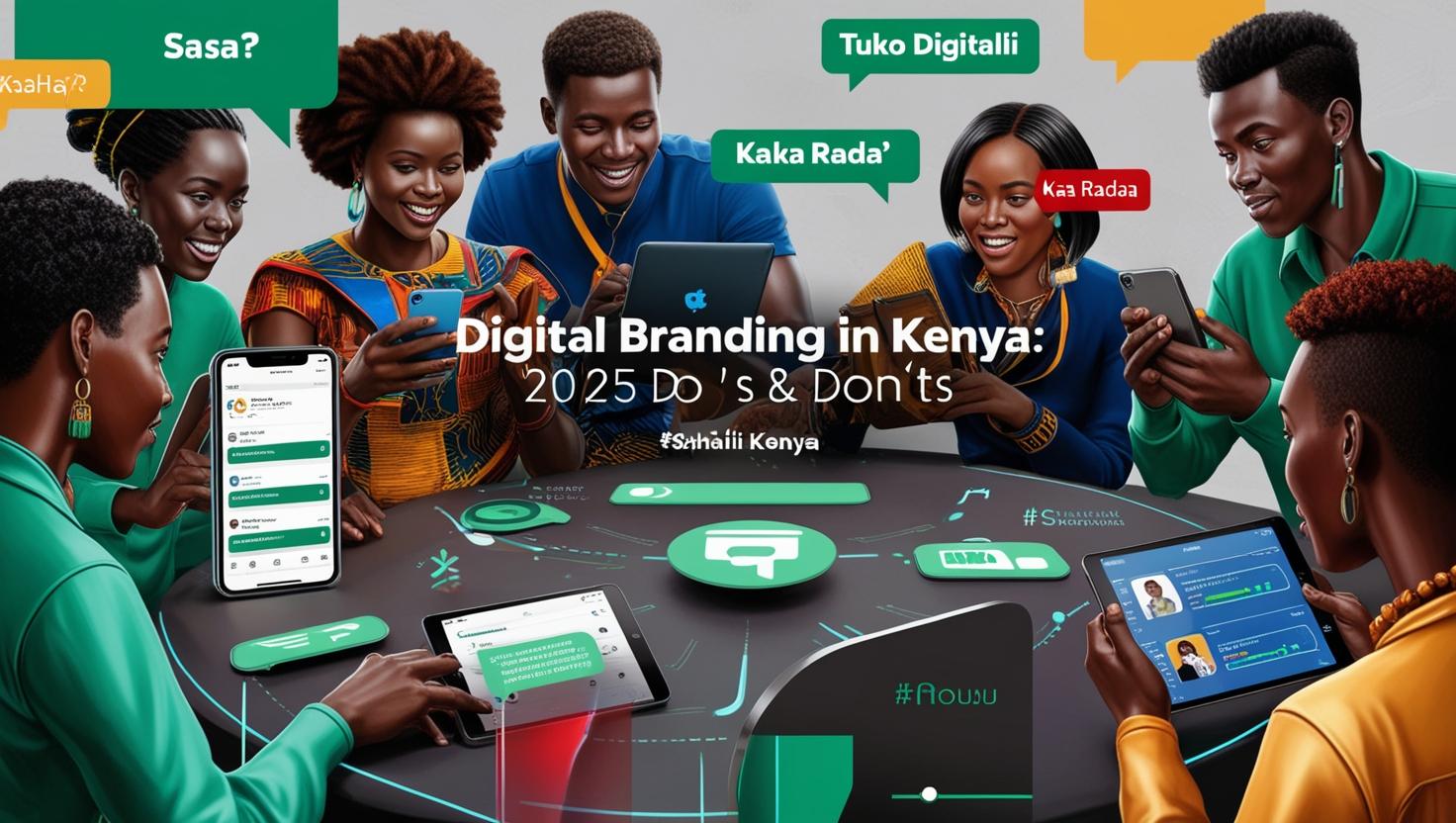Medixa Digital is a credited, Nairobi based, customer focused Digital Marketing Agency, specializing in helping businesses optimize the immense power of the internet as a marketing vehicle to acquire, engage and retain new and existing customers.

In 2025, Kenya’s digital landscape is bold, fast-moving, and fiercely customer-driven. As brands rush to capture attention in a saturated online market, digital branding has become a make-or-break pillar for success. With consumers more informed, vocal, and mobile-savvy than ever, brands must evolve or risk irrelevance.
Let’s break down the do’s and don’ts of digital branding in Kenya today, using real local case studies—from brilliant rebrands to painful public failures.
✅ DO’s: What Works in Kenya’s Digital Space.
- DO Build for Mobile-First Audiences
Example: Equity Bank’s DigiBanking Revamp
Equity Bank successfully overhauled its digital interface to improve mobile UX and launched educational content around it. It understood that most Kenyans access digital services via mobile—not desktop.
Why it works: Mobile-first design, simplified menus, and quick load speeds align with how users in Kenya engage with apps and platforms.
- DO Ground Your Identity in Local Culture
Example: Tusker’s Brand Refresh
Tusker retained its iconic elephant and Kenyan roots while modernizing its packaging and digital touchpoints. Campaigns like #KenyaMilele tied the brand to national pride, music, and youth identity.
Why it works: Localization builds emotional connections. Brands that speak in Swahili, Sheng, or local slang and align with national culture perform better.
- Do Focus on Storytelling, Not Just Selling
Audiences want more than product posts—they want narratives they relate to.
Example: Safaricom’s “Tuinuane” campaign was more about empowerment and less about airtime. It worked because it told real stories.
Tip: Humanize your brand—show the people, mission, and community impact behind it.
- DO Rebrand with Purpose, Not Just Design
Example: Kenya Airways’ Soft Brand Refresh
Rather than changing the logo, KQ focused on digital transformation, customer service feedback loops, and improved online booking journeys. Messaging was aligned with a “Pamoja” (together) philosophy.
Why it works: Audiences care more about experience than visuals. A successful rebrand in 2025 starts from the inside out.
- Do Monitor and Engage in Real-Time
Social listening and customer engagement are crucial in today’s reactive online space.
Example: Kenya Airways’ fast crisis responses on Twitter (X) during delays or flight issues has earned them respect—even amid complaints.
Tip: Use tools like Hootsuite, Sprout Social, or Meltwater to monitor sentiment and react quickly.
❌ DON’Ts: What to Avoid in 2025
- DON’T Rebrand Without Clear Communication Example: Nation Media Group’s NTV Logo Change (2022)
When NTV suddenly changed its logo and visual identity without public explanation or build-up, it confused long-time viewers and faced backlash online.
Lesson: Always accompany visual shifts with messaging that explains the “why” and includes audiences in the journey.
- DON’T Assume One Size Fits All for Kenya
Example: Multinational Fast-Food Chains Ignoring Local Preferences
Several international chains (e.g., Pizza Hut, KFC) initially failed to localize their digital content or menus—leading to poor online sentiment.
Lesson: Kenyan audiences expect some cultural or product adaptation. Digital branding that feels “foreign” is often met with indifference or resistance.
- DON’T Over-Rely on Paid Ads Without Organic Community Building
Example: Failed Fintech Apps with Flashy Launches
Several fintech startups in Kenya had massive digital ad campaigns but no long-term engagement strategy. Many faded after six months due to low user retention.
Lesson: Paid reach isn’t enough. Brands need two-way interaction, content marketing, and community-building.
- DON’T Ignore Customer Feedback on Digital Channels
Example: Telco Brands Ignoring Complaints on Twitter (X)
Kenyan customers routinely voice dissatisfaction on platforms like X. Brands that ignore or delete negative feedback risk public outcry and viral takedowns.
Lesson: In 2025, digital branding is customer service. How you respond online defines your brand reputation.
Closure:
Kenyan consumers in 2025 are digitally savvy, socially aware, and emotionally intelligent. They want brands that are authentic, locally relevant, and responsive.
The brands that will win in Kenya’s digital space this year are those that:
Tell real stories.
Respect their audiences.
Adapt to feedback.
Stay consistent in design and values.
Digital branding is no longer optional—it’s your first handshake with the Kenyan consumer. Make it count.



